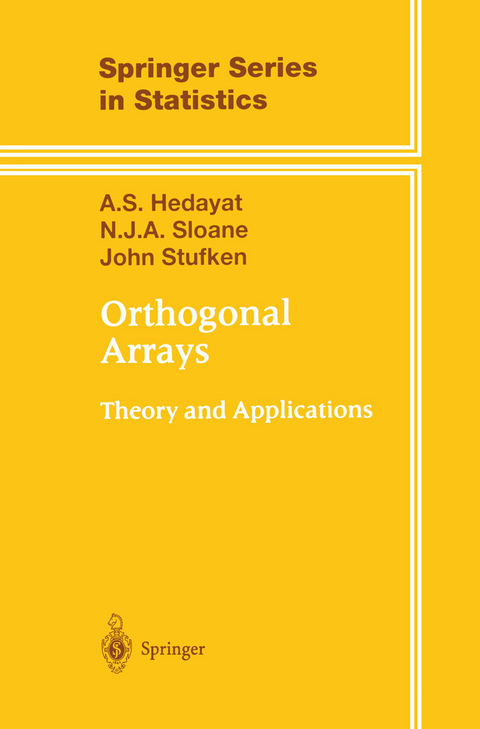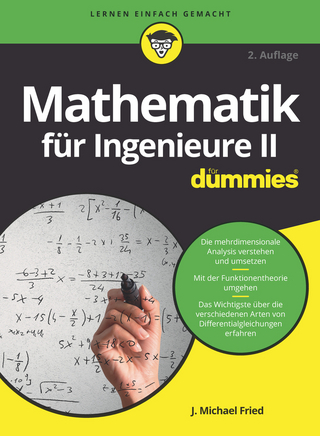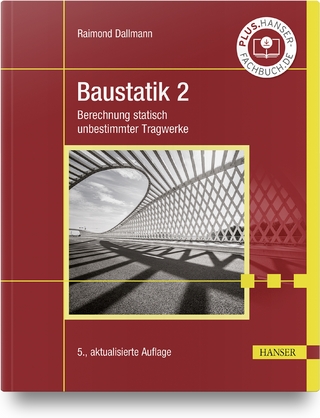
Orthogonal Arrays
Springer-Verlag New York Inc.
978-0-387-98766-8 (ISBN)
Orthogonal arrays have played a vital role in improving the quality of products manufactured throughout the world. This first book on the subject since its introduction more than fifty years ago serves as a key resource to this area of designing experiments. Most of the arrays obtained by the methods in this book are available electronically. Anyone running experiments - whether in a chemistry lab or a manufacturing plant, or in agricultural or medical research - will find this book useful.
1 Introduction.- 1.1 Problems.- 2 Rao’s Inequalities and Improvements.- 2.1 Introduction.- 2.2 Rao’s Inequalities.- 2.3 Improvements on Rao’s Bounds for Strength 2 and 3.- 2.4 Improvements on Rao’s Bounds for Arrays of Index Unity.- 2.5 Orthogonal Arrays with Two Levels.- 2.6 Concluding Remarks.- 2.7 Notes on Chapter 2.- 2.8 Problems.- 3 Orthogonal Arrays and Galois Fields.- 3.1 Introduction.- 3.2 Bush’s Construction.- 3.3 Addelman and Kempthorne’s Construction.- 3.4 The Rao-Hamming Construction.- 3.5 Conditions for a Matrix.- 3.6 Concluding Remarks.- 3.7 Problems.- 4 Orthogonal Arrays and Error-Correcting Codes.- 4.1 An Introduction to Error-Correcting Codes.- 4.2 Linear Codes.- 4.3 Linear Codes and Linear Orthogonal Arrays.- 4.4 Weight Enumerators and Delsarte’s Theorem.- 4.5 The Linear Programming Bound.- 4.6 Concluding Remarks.- 4.7 Notes on Chapter 4.- 4.8 Problems.- 5 Construction of Orthogonal Arrays from Codes.- 5.1 Extending a Code by Adding More Coordinates.- 5.2 Cyclic Codes.- 5.3 The Rao-Hamming Construction Revisited.- 5.4 BCH Codes.- 5.5 Reed-Solomon Codes.- 5.6 MDS Codes and Orthogonal Arrays of Index Unity.- 5.7 Quadratic Residue and Golay Codes.- 5.8 Reed-Muller Codes.- 5.9 Codes from Finite Geometries.- 5.10 Nordstrom-Robinson and Related Codes.- 5.11 Examples of Binary Codes and Orthogonal Arrays.- 5.12 Examples of Ternary Codes and Orthogonal Arrays.- 5.13 Examples of Quaternary Codes and Orthogonal Arrays.- 5.14 Notes on Chapter 5.- 5.15 Problems.- 6 Orthogonal Arrays and Difference Schemes.- 6.1 Difference Schemes.- 6.2 Orthogonal Arrays Via Difference Schemes.- 6.3 Bose and Bush’s Recursive Construction.- 6.4 Difference Schemes of Index 2.- 6.5 Generalizations and Variations.- 6.6 Concluding Remarks.- 6.7 Notes on Chapter 6.- 6.8Problems.- 7 Orthogonal Arrays and Hadamard Matrices.- 7.1 Introduction.- 7.2 Basic Properties of Hadamard Matrices.- 7.3 The Connection Between Hadamard Matrices and Orthogonal Arrays.- 7.4 Constructions for Hadamard Matrices.- 7.5 Hadamard Matrices of Orders up to 200.- 7.6 Notes on Chapter 7.- 7.7 Problems.- 8 Orthogonal Arrays and Latin Squares.- 8.1 Latin Squares and Orthogonal Latin Squares.- 8.2 Frequency Squares and Orthogonal Frequency Squares.- 8.3 Orthogonal Arrays from Pairwise Orthogonal Latin Squares.- 8.4 Concluding Remarks.- 8.5 Problems.- 9 Mixed Orthogonal Arrays.- 9.1 Introduction.- 9.2 The Rao Inequalities for Mixed Orthogonal Arrays.- 9.3 Constructing Mixed Orthogonal Arrays.- 9.4 Further Constructions.- 9.5 Notes on Chapter 9.- 9.6 Problems.- 10 Further Constructions and Related Structures.- 10.1 Constructions Inspired by Coding Theory.- 10.2 The Juxtaposition Construction.- 10.3 The (u, u + ?) Construction.- 10.4 Construction X4.- 10.5 Orthogonal Arrays from Union of Translates of a Linear Code.- 10.6 Bounds on Large Orthogonal Arrays.- 10.7 Compound Orthogonal Arrays.- 10.8 Orthogonal Multi-Arrays.- 10.9 Transversal Designs, Resilient Functions and Nets.- 10.10 Schematic Orthogonal Arrays.- 10.11 Problems.- 11 Statistical Application of Orthogonal Arrays.- 11.1 Factorial Experiments.- 11.2 Notation and Terminology.- 11.3 Factorial Effects.- 11.4 Analysis of Experiments Based on Orthogonal Arrays.- 11.5 Two-Level Fractional Factorials with a Defining Relation.- 11.6 Blocking for a 2k-n Fractional Factorial.- 11.7 Orthogonal Main-Effects Plans and Orthogonal Arrays.- 11.8 Robust Design.- 11.9 Other Types of Designs.- 11.10 Notes on Chapter 11.- 11.11 Problems.- 12 Tables of Orthogonal Arrays.- 12.1 Tables of Orthogonal Arrays of Minimal Index.-12.2 Description of Tables 12.1?12.3.- 12.3 Index Tables.- 12.4 If No Suitable Orthogonal Array Is Available.- 12.5 Connections with Other Structures.- 12.6 Other Tables.- Appendix A: Galois Fields.- A.1 Definition of a Field.- A.2 The Construction of Galois Fields.- A.3 The Existence of Galois Fields.- A.4 Quadratic Residues in Galois Fields.- A.5 Problems.- Author Index.
| Reihe/Serie | Springer Series in Statistics |
|---|---|
| Zusatzinfo | XXIII, 417 p. |
| Verlagsort | New York, NY |
| Sprache | englisch |
| Maße | 155 x 235 mm |
| Themenwelt | Mathematik / Informatik ► Mathematik ► Angewandte Mathematik |
| Mathematik / Informatik ► Mathematik ► Graphentheorie | |
| Mathematik / Informatik ► Mathematik ► Wahrscheinlichkeit / Kombinatorik | |
| Schlagworte | Orthogonal Arrays |
| ISBN-10 | 0-387-98766-5 / 0387987665 |
| ISBN-13 | 978-0-387-98766-8 / 9780387987668 |
| Zustand | Neuware |
| Haben Sie eine Frage zum Produkt? |
aus dem Bereich


